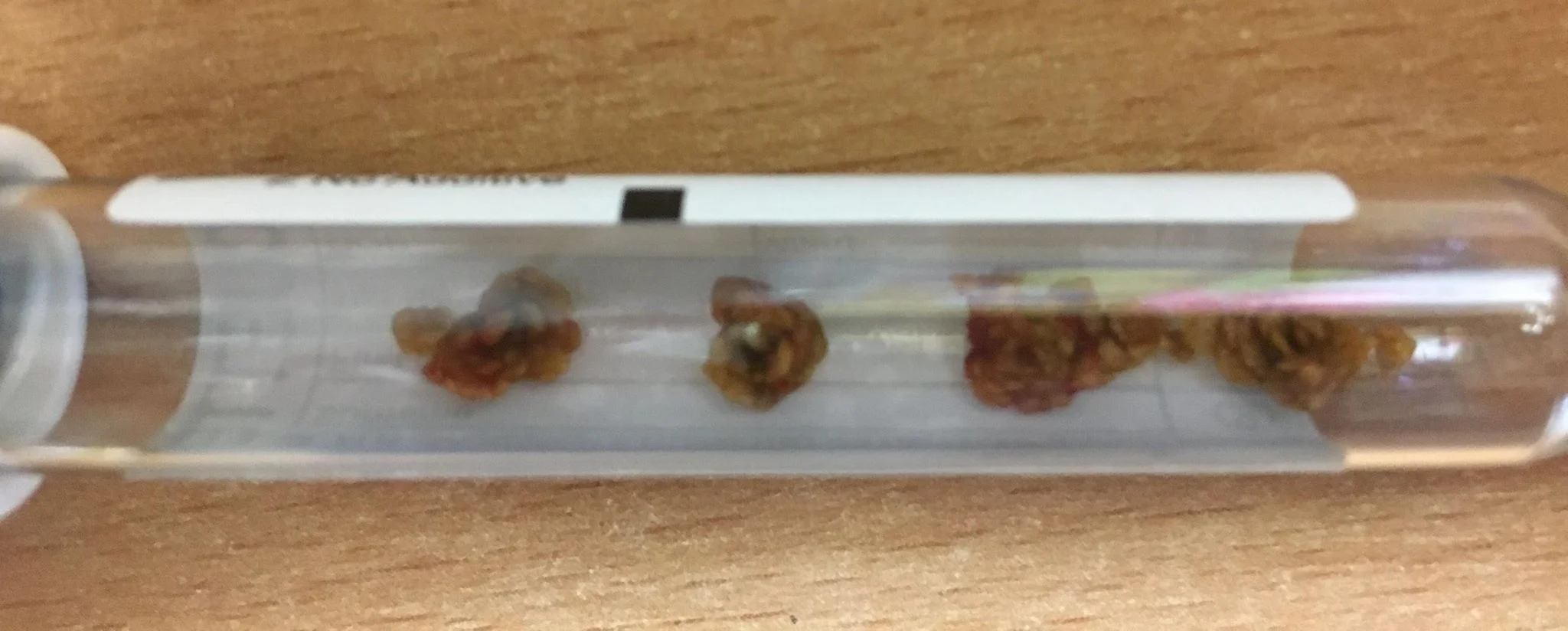Kelly and I were finishing a cystotomy. This is a surgery in which the urinary bladder is opened to remove urinary stones. I must have removed 99 stones. The dog was only three years old, and she had impressively made more stones than I had ever seen at once.
After stone removal surgery, we always take an x-ray to assure all the stones have been removed. Almost a formality. I always fret a bit though between the surgery room and the x-ray table.
The x-ray appeared on the screen, and one lone stone remained in the trigone of the bladder. I was mortified. This happens in a reported 20% of stone removal surgeries in which x-rays are taken afterwards, but it had never happened to ME.
Back to surgery we went, Kelly reminding me, as she often does, to BREATHE. I sure love that friend. As basic as it sounds, I was NOT breathing, and needed to in order to complete surgery.
We reopened the surgery site, I removed the stone with a hemostat and returned to take another x-ray. The stone was out, and I was glad I had returned for the one last stone.
Luke 15
or something








